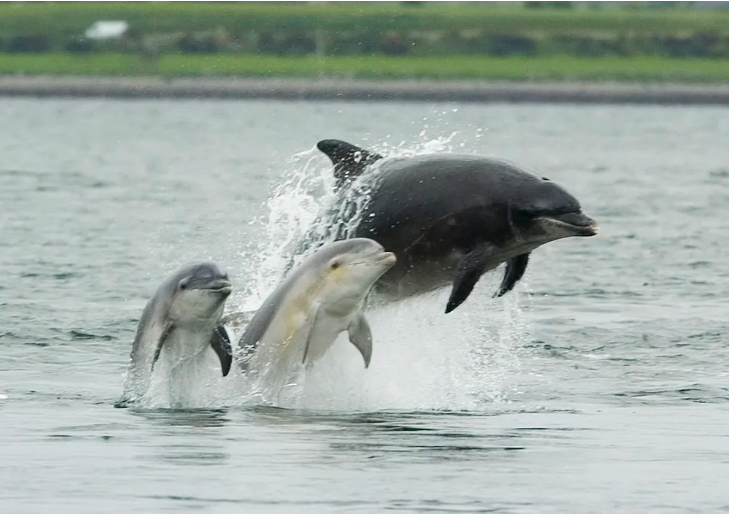When adult humans meet a cooing infant, many can’t help themselves: They begin speaking in a higher-pitched, sing-songy voice.
This small change is called “parentese” or “infant-directed speech,” and it’s not just people who do it. Rhesus macaques, squirrel monkeys, zebra finches, and gorillas all do it, too. Now, experts are adding the bottlenose dolphin to that list.
Dolphins have a unique way of talking to each other. Each one makes a unique sound that acts like a nametag or ID card. But how does each dolphin make a sound that is unique? It might have something to do with how well cows listen to their mothers. So, experts looked at the sounds mother dolphins make to try to figure out what was going on.
Scientists listened to 34 years’ worth of recordings of sounds made by 19 female bottlenose dolphins living near Sarasota Bay, Florida. When the mother dolphins were close to their babies, they kept making their whistle sound, but they did it more often. According to a new paper published Monday in the journal Proceedings of the National Academy of Sciences, they also used a wider range of frequencies when their calves were close than when they weren’t.
Do you hear the pitch change between these 2 whistles? It’s a bottlenose dolphin mom using “baby talk!”
Find out more about #WHOI biologist Laela Sayigh’s study in @PNASNews from @AP: https://t.co/A8yZWUqB80
📸 & 🎵: Sarasota Dolphin Research Program, NMFS MMPA Permit 20455 pic.twitter.com/GnKRNzgWrL
— Woods Hole Oceanographic Institution (WHOI) (@WHOI) June 27, 2023
Rindy Anderson, a behavioral ecologist at Florida Atlantic University who was not part of the study but did talk to National Geographic’s Carrie Arnold, says that this finding suggests that “using these modifications when communicating with young assists them in learning how to produce these calls themselves,”
At the very least, the calves will probably pay attention to the higher-pitched whistle.
Janet Mann, a marine scientist at Georgetown University who wasn’t part of the study, told AP’s Christina Larson, “It’s really important for a calf to know, ‘Oh, Mom is talking to me now,’ versus just announcing her presence to someone else,”
The results help us learn more about how dolphins talk to each other. Chen Ly of New Scientist says that these findings could one day help us learn more about how animals, including humans, learn to use their voices and create language.
It’s not clear why humans and other species talk to their young with a higher-pitched voice. Some study, though, shows that it might help babies learn to talk. Since dolphins are also “highly acoustic” and calves stay with their mothers for three to six years before going off on their own, it makes sense that this adaptation would also help them learn to talk, says Frants Jensen, a marine biologist at Aarhus University in Denmark and co-author of the study.
“The idea that there might be similar forces driving [parentese] in such different species is just really cool,” says study co-author Laela Sayigh, a marine biologist at the Woods Hole Oceanographic Institution, to Science News’ McKenzie Prillaman.
With more study, scientists could confirm this finding and find out how much dolphins talk like babies. Julie Oswald, a scientist at the University of St. Andrews in Scotland, tells New Scientist that she would love to find out if dolphins change their whistles when they meet other people’s babies, just like humans do.







